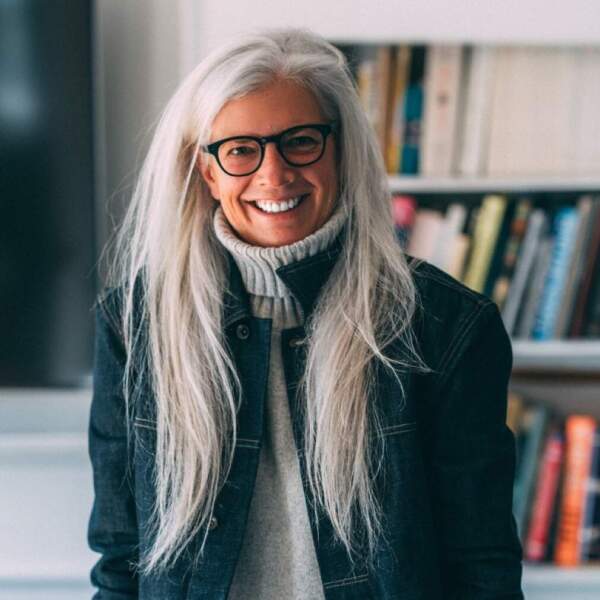Advertisement
Commentary
How cold water became my solid ground
Resume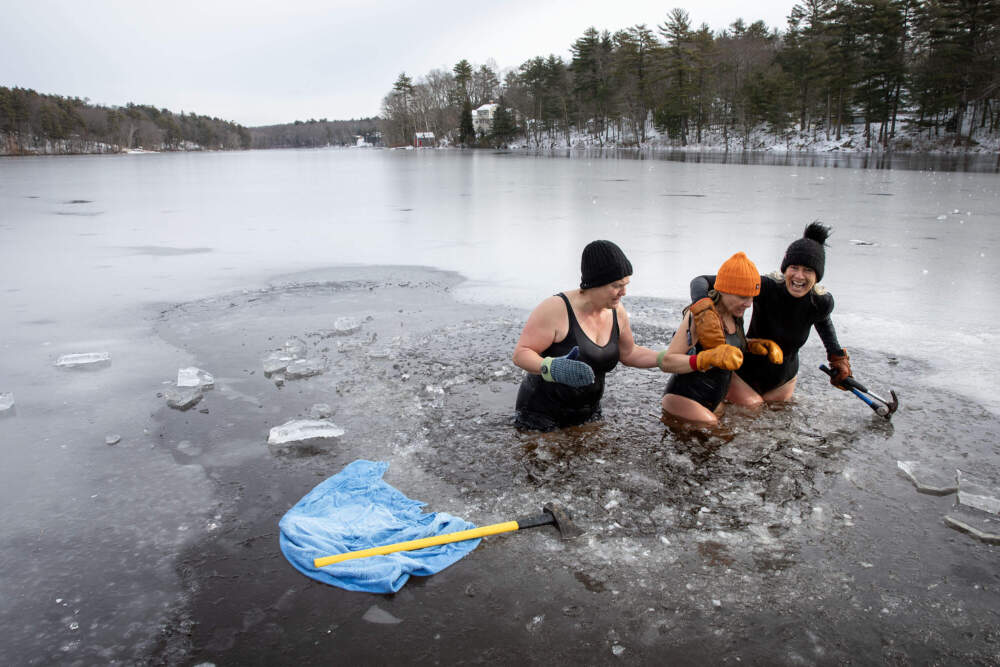
Editor's note: Cold water plunging is everywhere you look these days. It was the premise of a New York Times photo essay, the subject of a New Yorker documentary, and a NPR Lifekit episode. Our colleagues at the New England News Collaborative have explored the phenomenon too, in this short documentary about finding community in Vermont. To non-cold water enthusiasts, it seems a little weird and even dangerous. But for people who take up this practice, it can become a joyful — even essential — activity. Cog talked to Libby DeLana about her experience with the practice, and this essay was excerpted from that conversation. — Cloe Axelson

In the fall of 2020, I was out for a walk on Plum Island with my pandemic ‘pod squad’: Cheryl, Beth, Will and my 24-year-old son Orren.
We were walking on the beach, happy to be together socializing rather than sequestered in our homes. Our first cold water plunge was completely serendipitous. We’d all read about cold plunging online, and on a whim, we decided to get into the water. We stripped down, skin goosebumpy, clouds of breath escaping our noses, and tore off into the waves. We came right back out, hooting and hollering the entire time.
Back on the beach, breathless and dripping, we paused with astonishment, looked at each other and started laughing. I hadn’t laughed like that since lockdown began. I hadn’t felt so alive or free. None of us had.
My senses were sharp and my body was filled with adrenaline. To me, getting in the cold water was like falling in love — unexpected, exciting, dazzling, consuming. I left the water feeling giddy but with no inkling it would become a habit. Twenty-four hours later, we came back to Plum Island, smiled at each other, and tore off into the waves again.
Wim Hof — who’s basically the godfather of the mainstream cold exposure movement — is a Dutch athlete and motivational speaker. He once earned a Guinness World Record for swimming under ice, and he holds the current record for “fastest barefoot half marathon on ice and snow.” He’s written a book about cold exposure and conducts workshops that guide people through the process of creating a cold water practice.
He believes that by challenging our bodies we can calm and clear our minds.
I actually met Hof about a decade ago for a project. At the time, his list of odd (and oddly inspiring) accomplishments fascinated me.
I rowed crew in college, and eventually in the Nationals, but in adulthood being physical — in that very intense way — wasn’t a part of my daily experience anymore. I missed it. When I met Hof, I remember thinking, Oh, this might be an interesting way to express this deep desire I have to do something physically hard.
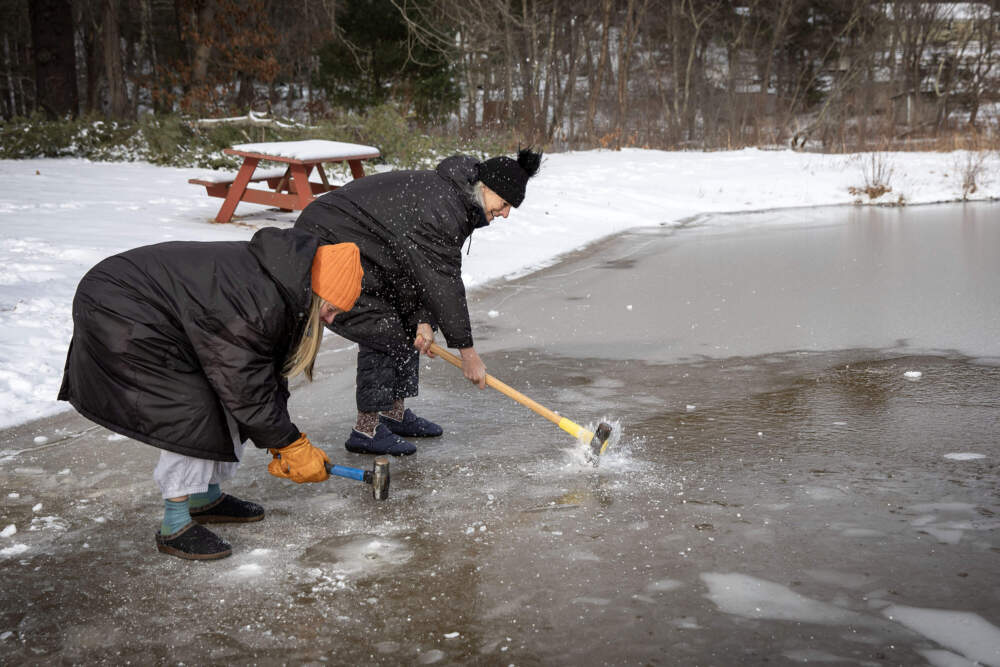
Hating the cold has always been a sturdy part of my identity. I was indeed the jackass in the puffer jacket in the middle of July.
My fear of it stemmed from an experience I had one night as a kid on an overnight camping trip. I was freezing, but felt too shy to ask for help, so I basically spent the entire night shivering. That fear stuck.
During the early parts of the pandemic, I started to see videos of cold exposure enthusiasts in Rubbermaid tubs full of frigid water (and ice!) on social media. I remember thinking, “Why on earth would anyone do that!?” I couldn’t imagine anything more uncomfortable. But pretty quickly, I recalled Wim Hof, and my question evolved to “I wonder if I could do it?”
I wanted to take something I identified with and start to test how porous it was
In many ways, the pandemic was a time of metamorphosis for all of us. It was also a time when I was facing some tectonic shifts in my personal life. The ways I identified myself were changing profoundly. My marriage was unraveling. My career felt murky. My boys were grown up and living their lives away from home — as I'd always hoped they would. To say I felt radically overwhelmed and wildly sad wouldn’t be overstating it. But I was resolved to emerge from it, not just different, but stronger and wiser.
I wanted to take something I identified with and start to test how porous it was.
I thought getting in freezing cold water would be miserable and hard, and it was. But after a while, it became a near-daily exercise in redefining myself. I would wake up feeling shaky and disoriented, flattened by the prospect of finding myself again after marriage, motherhood, career-making, and in a world upside down. But then, when I got into the water, I could see myself clearly.
The longer I kept getting in the water the less it was about cold and the more it was about exposure. The physical challenge stripped everything away: false narratives, fear, grief and anger. I wasn’t too fragile, I was resilient. I wasn’t dull and weary, I was joyful and funny and bright. And I didn’t hate the cold.
At some point, I built a bridge between cold exposure — which I had control over — and the hard things in my life that I had no control over. Several months in, the open water became my solid ground.
If you asked me how I felt right now, I don't know if I'd be able to tell you. But if I went out and started walking or if I got in the water, I'd begin to hear my body and be able to recognize what was happening — whether it’s tension in my chest, sparkles in my belly or something else. What is she saying, sharing, telling me? Until this practice, I didn’t trust those whispers. The cold taught me how to trust my body. It’s become another way for me to understand my emotional ecosystem.
Staying in longer isn’t better or braver or stronger. Just getting in is all of those things.
I get in the water five to six times a week. For me, it’s become an essential part of the day; it’s no different from making my bed or brushing my teeth. In 32-degree water, there’s no room to think “Did I leave something off my grocery list” or “Did I write that email?” Cold has a very focusing quality, and fidelity to the practice has been a powerful tool in rebuilding credibility and trust in myself.
I almost always get in the water with a group of brave, beautiful women. We show up as we are. We love our mermaid selves and each other. We laugh. We yelp. We can hardly believe that we’re hacking through the ice. On Sundays in the winter, we read “Why I Wake Early” by Mary Oliver as we slide through the ice and get in — for fun. There is no better medicine than this water and these people.
A lot of people ask how long I stay in. My answer is always that I stay in until I get calm. When I submerge, I exhale, I relax and invite myself to “calm.” Once I’m there, I can decide when to get out. Staying in longer isn’t better or braver or stronger. Just getting in is all of those things.
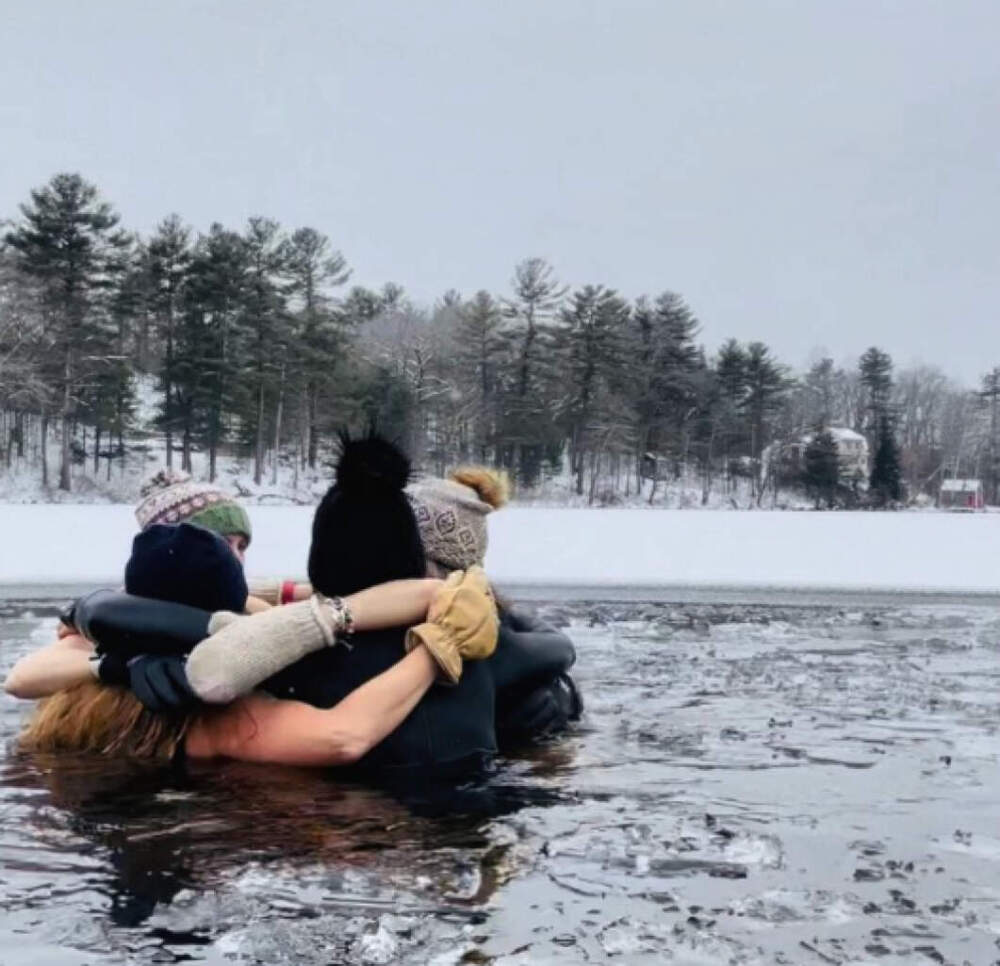
I’m also often asked what I wear. There is no glamorous answer. My uniform consists of an old bathing suit and hand-me-down neoprene booties from my son. (I think of him every time I slide them on and off.) I’ve got old gloves that I wear in the water as well, and two hats — one while I’m in the water, and another one for after I get out. This is not a practice that requires a shopping trip. Use what you’ve got.
For me, getting out of the water is the hardest part. Everyone is different, but I step onto a towel (lots of heat goes out your feet) and take my suit off immediately, using a Voited changing coat which is oversized and enables me to take my suit off inside it. We’ve lost all sense of modesty — decorum goes out the window when you’ve got to get warm. I wear socks inside my booties, so I don’t battle with suction to tug them off. Having a warm wool sweater to pull on and a cup of hot tea in the car make things easier (but just a little).
I believe that the more you do something, the more interesting the lessons that emerge — but it takes time. You don't get all the lessons immediately. I’ve walked every day for 12 years, and I'm getting lessons from my walking practice now that weren’t available to me in year one. Cold exposure is no different. And it has so much more to teach me. My teacher is the cold; there is wisdom in this relationship.
I recently rediscovered a picture of me as a little girl. It looks like my pigtails have been in for about four days. I’m wearing navy blue pinstriped OshKosh overalls over a white smocked shirt, and I’ve got on an old raggedy pair of flip-flops.
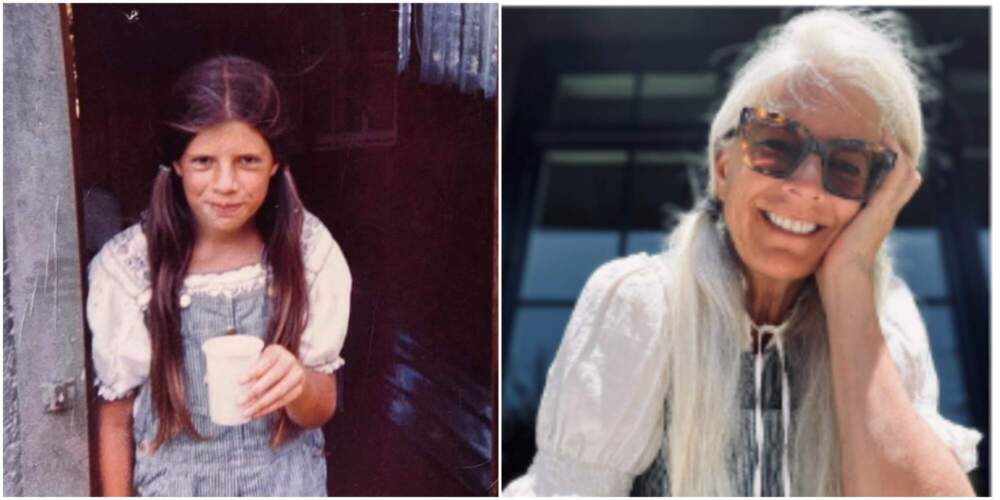
I look so happy in that photo, so completely at ease. I was the backpacker girl, the kid who loved the barn and being outside.
But at some point, I lost track of her. I had a very successful career in advertising — it provided me with incredible opportunities — but my life wasn’t really in alignment with the core of who I am.
Finding that picture was a revelation. When I found it, I took a picture of myself in the same outfit; I put my hair in pigtails. I was, like, OK, we’re going to bring her back; she’s coming back.
I think when your insides and your outsides are aligned, magical things happen. And that's kind of what's happened for me in the last few years.
Today I’m more myself than ever — in ease and discomfort, in courage and fear, in the water and out, in progress always. The cold water reminds me of what I am capable of.
Follow Cognoscenti on Facebook and Instagram .
This piece was produced by Cloe Axelson with help from David Greene and Paul Calo.
This segment aired on February 21, 2024.
